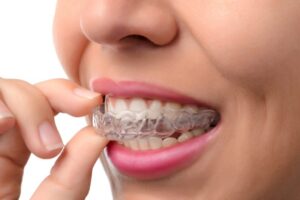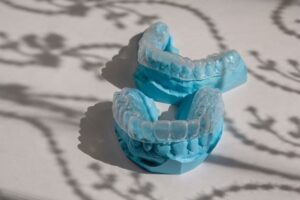Cosmetic bonding refers to a process where your dentist attaches ceramic or resin materials directly to the tooth to upgrade the appearance of your smile. While cosmetic bonding can be used for many purposes, Dr. Mina Levi offers this treatment for patients that want to improve slight imperfections. Find out if you qualify for cosmetic bonding or other cosmetic dentistry treatments by scheduling a consultation at our San Francisco office right now.
Reasons to Consider Dental Bonding
Commonly, dentists apply cosmetic bonding to improve the way your smile looks—not a solution for structural or medical issues. Fundamentally, composite bonding evens out the size, shape, and color of your teeth while concealing minor flaws. Furthermore, dental bonding can address:
- Gaps between the teeth (diastema)
- Cracked or chipped teeth
- Discolored teeth
- Crooked or misshapen teeth
Cost
When considering a cosmetic dentistry treatment, it’s normal to be curious about the cost. Typically, the price of cosmetic bonding fluctuates depending on the location you choose, the extent of treatment, and your dentist’s expertise. Generally, you can anticipate paying as low as $107. But, it’s sensible to speak with your dentist for a more accurate representation of the total cost of treatment.
Typically, insurance does not cover cosmetic dentistry. So, if you are worried about paying out-of-pocket, ask our team about our third-party financing options.
Additionally, it’s noteworthy to mention that dental bonding doesn’t last forever and is prone to chipping and staining. So, we recommend replacing cosmetic bonding every five to ten years, which can add up over time.
Alternatives to Cosmetic Bonding
Cosmetic bonding is not the only way to improve the way your whole smile looks:
Porcelain Veneers
Regarding purely cosmetic bonding, porcelain veneers serve as a popular alternative to composite resin. Veneers can tackle similar cosmetic issues, such as uneven spacing, discoloration, and minor damage. While porcelain veneers typically last longer and are color stable, they are generally more expensive, require more appointments to install, and are less conservative.
Dental Crowns
Even though dental bonding can mask minor damage or decay, more severe cases will likely call for a dental crown. Dentists cap and cement dental crowns on top of teeth to protect, cover, and restore moderately damaged teeth. Your dentist will go over your treatment options and let you know if dental bonding or crowns are necessary.
Invisalign®
Are you considering cosmetic bonding to close a noticeable gap in your smile line? Although Invisalign® doesn’t fix cracks or chips, clear aligner therapy can close gaps between the teeth by perfecting alignment. Likewise, Invisalign® results are intended to last a lifetime, provided that you follow your dentist’s specific orders (for example, wearing a retainer as instructed).
Avoid At-Home Teeth Bonding Kits
Despite the fact that at-home teeth bonding kits might seem tempting because of cost and convenience, we don’t recommend them. First of all, at-home teeth bonding kits can only address trivial cases and cannot tackle advanced cosmetic problems (such as gaps between the teeth). Secondly, at-home bonding kits do not come with the tools or expertise your local dentist has to offer. So, schedule an appointment with your cosmetic dentist for better-looking, longer-lasting results.
If You’re Considering Cosmetic Bonding in San Francisco, Contact Dr. Mina Levi
Are you ready to dramatically improve the way your smile looks? Learn more about cosmetic bonding, Invisalign®, or any other cosmetic dentistry treatment by calling 413-513-5066 or messaging us online.










